CHAPTER 2: Introduction to Agile
The Competitive Edge for Modern Project Managers
What is Agile
2.1 What is Agile?
Agile is a way of thinking and working that helps teams deliver value faster and more effectively. At its heart, Agile is not a tool or a process. It is a mindset. Agile emphasizes adaptability, collaboration, and delivering small, meaningful results quickly. Instead of planning everything in advance, Agile encourages teams to learn as they go and respond to change. This makes Agile especially powerful in today’s fast-moving world, where customer needs and technologies evolve constantly.
Origins of Agile
The roots of Agile can be traced back to the 1980s and 1990s. During that time, software projects were often managed in rigid, sequential ways. These methods, sometimes called waterfall, struggled to cope with changing requirements. Projects ran late, went over budget, or delivered products that did not meet customer needs. In response, practitioners began experimenting with lighter, more flexible approaches. These included frameworks like Scrum, Extreme Programming, and Crystal. The success of these experiments laid the foundation for Agile as we know it today.
The Agile Manifesto
In 2001, a group of seventeen software experts met in Snowbird, Utah. They wanted to define a better way to build software and share ideas that had been working in practice. From that meeting came the Agile Manifesto. This short but powerful document has become the foundation of Agile thinking worldwide. The manifesto is built on four core values and twelve guiding principles. While originally written for software, these ideas have proven useful in almost every industry. The Agile Manifesto captures the spirit of flexibility, learning, and focus on people that defines Agile.
The Four Values of Agile
The Agile Manifesto highlights four key values:
- Individuals and interactions over processes and tools.
- Working solutions over comprehensive documentation.
- Customer collaboration over contract negotiation.
- Responding to change over following a plan.
These values do not say that processes, documentation, contracts, or plans are unimportant. Instead, they remind us that people, working solutions, collaboration, and adaptability are more important. The values are about focus and balance, helping teams prioritize what truly drives project success.
The Agile Mindset
The Agile mindset is the way of thinking that brings the values and principles to life. It means being open to change instead of resisting it. It means listening to customers and stakeholders instead of working in isolation. It means breaking work into smaller pieces, delivering value quickly, and learning as you go. This mindset is not limited to software developers. It can be applied by project managers, marketers, teachers, and anyone leading complex work. The Agile mindset is what turns the manifesto from words on a page into real-world practices.
Why Agile Still Matters
Agile has become more than a movement in software. It is now one of the most widely used approaches to managing projects and delivering value. Organizations use Agile because it helps them stay competitive and meet customer needs faster. Agile provides structure without rigidity and encourages teams to continuously improve. This book shows how Agile values, principles, and practices can transform the way projects are managed. Starting with the Agile mindset provides the foundation to understand every framework that builds upon it.
2.2 Why Projects Fail and Agile Helps
Why Projects Fail
Many projects fail because they try to predict and control everything from the start. Traditional methods often assume that requirements are stable and clear. In reality, customer needs shift, technologies evolve, and markets change. These uncertainties make rigid plans quickly outdated. When teams focus on following the plan instead of delivering value, they risk producing results that nobody wants. Late delivery, cost overruns, and dissatisfied customers are common signs of this failure.
The Cost of Late Learning
One major reason projects fail is late learning. In sequential approaches, testing and feedback come only at the end. By then, problems are expensive and painful to fix. Imagine building a custom house only to discover at the end that the design does not meet the family’s needs. In projects, this happens when teams wait months or years before showing real results to stakeholders. The longer the feedback is delayed, the greater the chance of wasted effort and disappointment.
Rigid Plans vs. Changing Reality
Another source of failure is relying on rigid, upfront plans. Plans are useful, but when treated as unchangeable contracts, they become traps. Teams spend time defending the plan instead of adapting to reality. Market conditions shift, competitors release new products, or regulations change. When plans cannot adjust quickly, projects miss opportunities and struggle to stay relevant. Flexibility is essential in today’s unpredictable environment.
How Agile Helps
Agile addresses these causes of failure by promoting adaptability and continuous learning. Agile projects break work into short cycles, usually called iterations or sprints. At the end of each cycle, teams deliver a usable piece of value. Stakeholders see progress early and provide feedback. This prevents surprises at the end and reduces the cost of changes. By delivering in small steps, Agile teams build trust and adjust direction based on real evidence, not guesses made months earlier.
Early and Frequent Feedback
One of the strongest ways Agile prevents failure is through constant feedback. Teams demonstrate progress regularly to customers and stakeholders. Problems are discovered quickly, and solutions can be adjusted. This feedback loop means fewer wasted resources and fewer missed opportunities. Customers feel engaged in the process, and teams stay aligned with real needs. Early and frequent feedback reduces risk and increases the chances of success.
Creating Shared Ownership
Agile also helps projects succeed by encouraging collaboration and shared ownership. Instead of separating roles into silos, Agile brings cross-functional teams together. Developers, testers, designers, and business representatives work side by side. This collaboration prevents misunderstandings and builds collective responsibility for results. When everyone feels ownership, motivation rises and the focus remains on delivering value. Agile shifts the mindset from “my task” to “our success.”
Agile as a Path to Success
Projects fail when they cannot adapt, learn, or deliver value quickly. Agile helps by offering a framework built for change and learning. Through short cycles, regular feedback, and close collaboration, Agile reduces risk and increases success. While no method can guarantee perfect results, Agile provides the best chance for projects to deliver what customers truly need. By addressing the common causes of failure, Agile creates a path toward more predictable and valuable outcomes.
2.3 Traditional vs Agile Project Management
Traditional Project Management
Traditional project management is often called a predictive or plan-driven approach. It relies on creating detailed plans at the beginning of a project. These plans include scope, schedule, and cost, all defined upfront. The idea is that if the plan is followed carefully, the project will succeed. This approach works best when the work is repeatable, stable, and easy to define. Examples include construction projects, manufacturing, or implementing a well-known process where uncertainty is low.
Definable Work vs. High-Uncertainty Work
Definable work is work where the requirements and steps are clear from the start. Think about building a road, or deploying the same software into many offices. In contrast, high-uncertainty work has unknowns that emerge as the project moves forward. Examples include developing new products, research projects, or digital transformation. Traditional methods handle definable work well. However, they often struggle with high-uncertainty work because changes are expensive and difficult to manage once the plan is set.
The Challenges of Traditional Approaches
Traditional methods assume that the future can be predicted with enough planning. The reality is often different. Requirements change, technology evolves, and customers discover new needs. In a traditional model, these changes are treated as problems, not opportunities. Teams may spend more time managing change requests and paperwork than delivering value. This creates frustration, delays, and in some cases, products that no longer meet the original purpose.
Agile Project Management
Agile project management takes a different path. Instead of trying to predict everything upfront, Agile accepts uncertainty as normal. Work is divided into short, timeboxed cycles called iterations or sprints. Each cycle delivers a small, usable piece of value. This approach allows stakeholders to see progress early and adapt quickly. Agile is not about abandoning planning; it is about planning differently. Plans are created with the understanding that they will evolve as new information becomes available.
How Agile Handles Uncertainty
Agile thrives in environments where requirements are unclear or changing. By focusing on small increments of work, Agile reduces risk. If a mistake is made, it is caught early. If customer needs change, the backlog can be updated and the next cycle adjusted. Agile turns uncertainty into an advantage by using it as a chance to learn and improve. Instead of fighting change, Agile welcomes it as a natural part of building something valuable.
Finding the Right Balance
Traditional and Agile approaches are not enemies. Each has a place. Traditional project management is better for definable, repeatable work. Agile is better for uncertain, complex work where learning is ongoing. Some organizations use a hybrid model, applying predictive methods to stable parts of a project and Agile methods to areas that require innovation. The key is to match the approach to the type of work. This ensures projects are managed in the most effective way possible.
The Shift Toward Agile
Many organizations are moving toward Agile because today’s environment demands adaptability. Projects often involve rapid technology shifts and evolving customer expectations. Agile provides the flexibility to succeed in this reality. By embracing Agile project management, teams can respond faster, deliver value sooner, and stay aligned with stakeholder needs. Understanding the difference between traditional and Agile methods is the first step toward choosing the right approach for your project.
2.4 Agile Principles vs Practices
Agile Principles and Agile Practices
Agile is often misunderstood as a set of practices or tools. In reality, Agile is a mindset supported by principles. The Agile Manifesto defines values and twelve guiding principles. Practices, such as daily standups, backlog refinement, or sprints, are ways to bring those principles to life. Without the mindset and principles, practices become empty rituals. To apply Agile effectively, it is important to understand the difference between principles and practices.
The Twelve Principles of Agile
The Agile Manifesto includes twelve principles that provide practical guidance. They emphasize customer satisfaction, responding to change, and frequent delivery of value. Other principles focus on collaboration, sustainable pace, simplicity, and continuous improvement. These principles are timeless. They do not prescribe specific steps but instead describe the behaviors and outcomes Agile teams should strive for. They are the compass that guides decision-making in uncertain environments.
What Agile Practices Look Like
Agile practices are the concrete methods teams use daily. Examples include visual boards like Kanban, timeboxed iterations, daily standup meetings, sprint reviews, retrospectives, and backlog management. These practices make principles visible and actionable. For instance, the principle of regular reflection becomes real through a retrospective. The principle of customer collaboration becomes real through sprint reviews. Practices give teams structure and rhythm while reinforcing Agile principles.
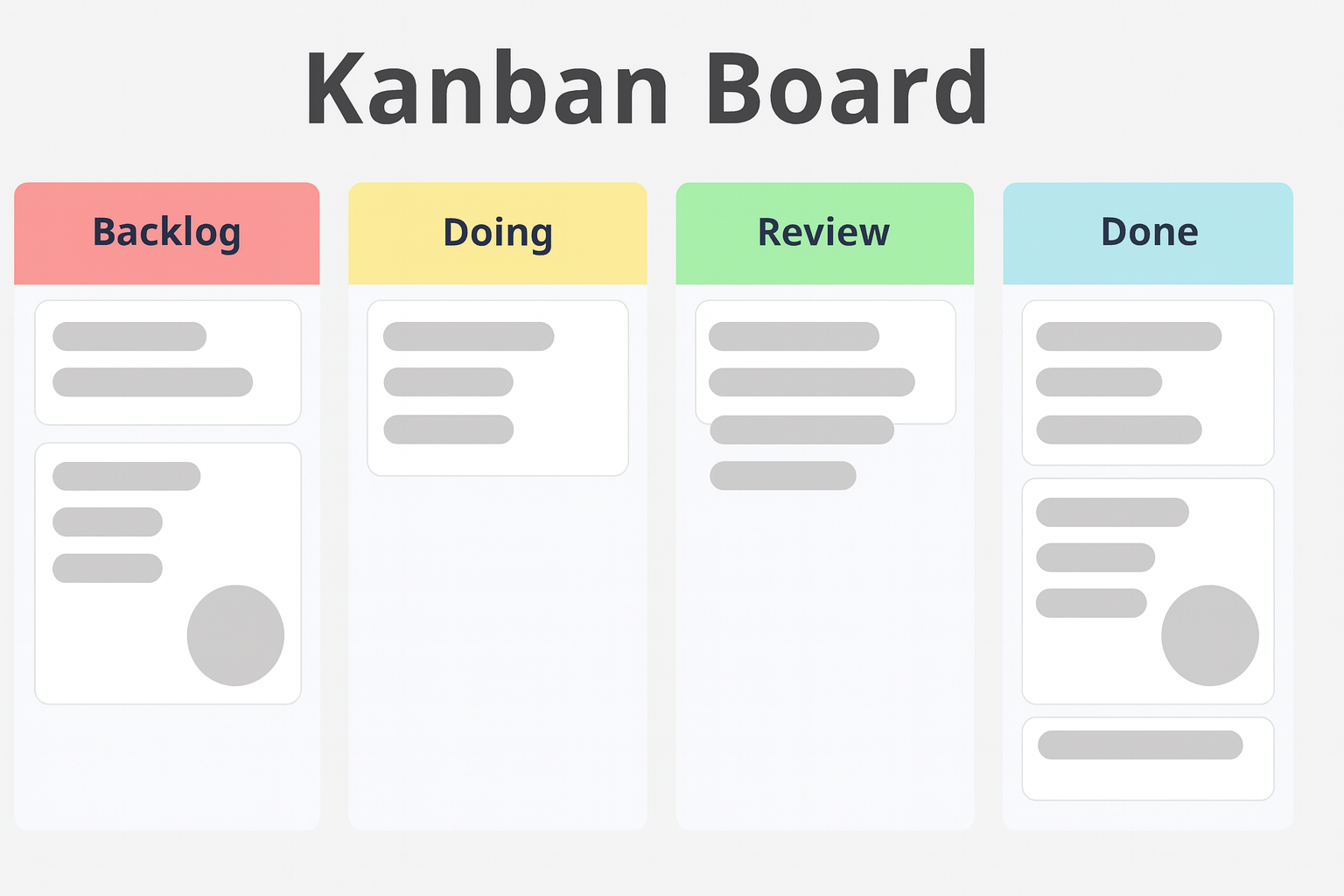
Principles Without Practices
Applying principles without practices can lead to vague intentions and little progress. A team may say they value collaboration but never hold structured reviews or feedback sessions. Without practices, principles risk becoming slogans. Teams need practices to turn ideas into concrete behaviors. The right practices make principles visible and measurable, ensuring the team lives the Agile mindset every day.
Practices Without Principles
Practices without principles are equally dangerous. A team may perform daily standups but treat them as status updates instead of collaboration. They may run sprints but resist change requests. In these cases, practices become mechanical and lose their value. Agile becomes a checklist rather than a mindset. To succeed, practices must always be guided by the principles that inspired them.
Bringing Principles and Practices Together
The real strength of Agile comes from combining principles and practices. Principles provide direction, while practices provide action. Together, they create a cycle of learning, adaptation, and delivery. Teams that understand this relationship avoid the trap of rigidly following rituals or blindly quoting principles. Instead, they tailor practices to their context while staying true to Agile values and principles. This balance allows Agile to remain flexible and effective across different industries and project types.
Why This Matters for You
As you continue learning Agile, remember that practices may vary between frameworks such as Scrum, Kanban, or Extreme Programming. But the principles remain consistent. If you understand the principles, you will be able to evaluate whether a practice is truly Agile or just activity without value. This understanding will help you apply Agile effectively, no matter which framework or tools you choose to use.
2.5 Agile Manifesto 12 Principles
Where should i start?
This might feel a little slow if you’re eager to dive straight into the core principles of Agile. If that’s you, feel free to read ahead and revisit it later once you’ve completed the book. That said, I encourage you to continue for a minute—because understanding these foundational ideas will make Agile much clearer and more meaningful.
The Agile Manifesto Principles
The Agile Manifesto is more than a statement of values. It is supported by twelve guiding principles. These principles explain how Agile teams bring values into daily practice. They are not rules or checklists. Instead, they are guidance for behaviors, decisions, and mindsets that help projects succeed. Understanding these principles gives you the foundation to recognize whether a team is truly Agile or only using Agile terms.
Principle 1: Customer Satisfaction
The first principle states that our highest priority is to satisfy the customer through early and continuous delivery of valuable solutions. This principle reminds teams that projects exist to deliver value, not just outputs. Frequent delivery keeps customers engaged and builds trust that their needs are being met.
Principle 2: Embrace Change
The second principle welcomes changing requirements, even late in development. Agile processes use change to provide the customer with a competitive advantage. Instead of resisting change, Agile sees it as an opportunity to improve the product and keep it relevant.
Principle 3: Deliver Frequently
The third principle encourages delivering working results frequently, from a couple of weeks to a couple of months, with a preference for shorter timelines. Delivering often reduces risk, provides feedback sooner, and creates a steady flow of value.
Principle 4: Collaboration Between Business and Developers
The fourth principle stresses that business people and developers must work together daily. This collaboration prevents misunderstandings and ensures that solutions truly match business needs. Agile removes silos and fosters shared responsibility.
Principle 5: Build Around Motivated Individuals
The fifth principle advises teams to build projects around motivated people. Give them the environment and support they need and trust them to get the job done. Empowered people create better solutions than controlled or micromanaged teams.
Principle 6: Face-to-Face Conversation
The sixth principle says the most effective way to convey information is through face-to-face conversation. While tools can help, direct human interaction reduces misunderstandings and speeds up decision-making. In today’s world, this can mean virtual calls or in-person discussions.
Principle 7: Working Software as Progress
The seventh principle highlights that working solutions are the primary measure of progress. Documentation and reports are useful, but the real question is whether the product delivers value to the customer. This keeps focus on outcomes, not paperwork.
Principle 8: Sustainable Pace
The eighth principle promotes sustainable development. Sponsors, developers, and users should be able to maintain a steady pace indefinitely. Burning people out may deliver quick wins, but it harms long-term success. Agile favors steady progress that can last.
Principle 9: Technical Excellence
The ninth principle encourages continuous attention to technical excellence and good design. Quality is not a phase at the end of the project. It is built in from the start. Strong technical practices make teams more adaptable and able to respond to change.
Principle 10: Simplicity
The tenth principle values simplicity, defined as maximizing the amount of work not done. Teams should focus only on what adds value and remove unnecessary complexity. Simplicity creates clarity, reduces waste, and speeds delivery.
Principle 11: Self-Organizing Teams
The eleventh principle states that the best architectures, requirements, and designs emerge from self-organizing teams. When people are trusted to manage their own work, they create solutions that are more innovative and effective than those imposed from above.
Principle 12: Reflection and Improvement
The twelfth principle encourages teams to regularly reflect on how to become more effective, then adjust behavior accordingly. This is the principle behind retrospectives. Continuous improvement ensures that Agile teams do not just deliver value, but also get better over time.
Principles as a Compass
Together, these twelve principles form a compass for Agile practice. They remind teams to focus on value, people, collaboration, and adaptability. Practices may change, but these principles remain constant. To explore them directly, visit the official Agile Manifesto website at agilemanifesto.org
2.6 Benefits of Agile and Why Organizations Adopt It
The Value of Agile
Agile is not just a trendy way of working. It delivers real, measurable benefits that make it the preferred approach for many organizations today. By emphasizing adaptability, collaboration, and frequent delivery of value, Agile helps teams achieve better outcomes with less waste. These benefits go beyond project teams and extend to customers, stakeholders, and entire organizations. Understanding these benefits explains why so many companies choose to adopt Agile.
Faster Delivery of Value
One of the greatest benefits of Agile is early and frequent delivery of usable results. Instead of waiting months or years for a final product, customers see progress within weeks. This speed allows organizations to capture value sooner, whether that means increased revenue, improved customer satisfaction, or faster feedback. Delivering value quickly also reduces the risk of building something that does not meet real needs.
Improved Adaptability
Agile thrives in environments of change. Markets shift, technology evolves, and customer needs are rarely static. Agile makes it easier for teams to adjust plans and priorities without derailing the entire project. By working in small increments, teams can absorb changes and even turn them into advantages. This adaptability is one of the main reasons organizations choose Agile over traditional approaches.
Stronger Collaboration and Engagement
Agile encourages close collaboration between teams, stakeholders, and customers. Practices such as daily standups, sprint reviews, and retrospectives ensure constant communication. This engagement prevents misunderstandings and creates a sense of shared ownership. When stakeholders are regularly involved, the product better reflects real business needs, and teams feel more motivated to deliver quality outcomes.
Higher Quality Results
By integrating feedback loops and continuous testing, Agile builds quality into the process. Problems are caught early, when they are easier and cheaper to fix. Iterative development allows designs to improve step by step. Continuous attention to technical excellence also reduces long-term risks. The result is products and services that better meet customer expectations and maintain higher standards of quality.
Greater Customer Satisfaction
Customers benefit from Agile because they are involved throughout the project. They see progress regularly, provide input, and help shape the solution. This reduces the gap between what customers expect and what is delivered. Frequent updates and the ability to adjust features ensure that customers feel heard and valued. Satisfied customers are more likely to remain loyal and advocate for the organization.
Organizational Benefits
Beyond individual projects, Agile provides broader organizational benefits. It helps companies stay competitive in fast-moving markets by delivering value sooner and adapting quickly. It improves transparency, which builds trust across departments and leadership. Agile also creates a culture of continuous improvement, where teams regularly reflect and adjust. Over time, this culture increases innovation, efficiency, and resilience.
Why Organizations Adopt Agile
Organizations adopt Agile because it aligns with the realities of modern business. Customers demand speed, quality, and flexibility. Markets punish delays and inefficiency. Agile offers a way to stay relevant, responsive, and competitive. It is not just about managing projects differently—it is about transforming how organizations deliver value. This is why Agile adoption continues to grow across industries worldwide.
2.7 Agile Suitability Filters and Tailoring Approaches
Agile Is Not One-Size-Fits-All
Agile brings many benefits, but it is not always the right fit for every project. Some work is best managed with predictive methods, while other work benefits from Agile or a hybrid approach. To decide whether Agile is suitable, organizations use tools known as suitability filters. These filters help teams evaluate the level of uncertainty, complexity, and change in their projects. By applying these filters, leaders can make informed choices about when and how to use Agile.
Agile Suitability Filters
Suitability filters are sets of questions or assessments that guide the decision on whether Agile is appropriate. They consider factors such as how stable the requirements are, how fast the environment is changing, how critical early delivery is, and how much customer collaboration is available. A project with stable requirements and low uncertainty may not benefit much from Agile. A project with high uncertainty and rapidly changing needs is far more suitable.
Examples of Suitability Questions
Common suitability questions include:
- Are requirements likely to change during the project?
- Is customer or stakeholder feedback available frequently?
- Does early delivery of value matter to the business?
- Is the team cross-functional and empowered to make decisions?
- Are risks and uncertainties high in technology or design?
Answering yes to these questions often indicates a strong case for using Agile practices. Answering no may suggest that predictive methods, or a hybrid approach, are better choices.
Tailoring Agile Approaches
Even when Agile is suitable, one framework does not fit every project. Tailoring is the process of adapting Agile practices to fit the specific context. For example, a team may combine Scrum with Kanban, or use Agile practices alongside predictive governance. The key is to preserve the core values and principles of Agile while adjusting practices for the situation. Tailoring ensures that Agile is not rigid but remains practical and effective.
Hybrid Approaches
Many organizations find success with hybrid approaches. These combine predictive and Agile elements in the same project. For example, a predictive approach may be used for regulatory compliance tasks, while Agile is used for product development. Hybrid models allow teams to benefit from both stability and adaptability. The important point is that the choice is deliberate, not accidental. Leaders assess the work and select the right combination of approaches for success.
Continuous Evaluation
Suitability and tailoring are not one-time decisions. As projects evolve, the level of uncertainty and risk may change. Agile teams regularly assess whether their current approach is still the best fit. This flexibility allows organizations to shift between predictive, Agile, or hybrid methods as needed. Continuous evaluation ensures that teams stay aligned with business needs and maximize value delivery.
Making Agile Work for You
Agile is powerful when applied in the right context. Suitability filters help decide if Agile is appropriate, and tailoring ensures it fits the unique project environment. Hybrid approaches provide additional flexibility for complex organizations. By using these tools, teams avoid blindly applying Agile everywhere and instead use it where it creates the most value. Agile is not about being trendy—it is about delivering results in the smartest way possible.
2.8 Life Cycle Selection
Why Life Cycle Selection Matters
Every project follows a life cycle, which is the path from starting work to delivering results. Choosing the right life cycle is one of the most important decisions in project management. A mismatch between the life cycle and the type of work can cause wasted effort, delays, and poor outcomes. Agile is one option, but it is not the only one. Understanding the different life cycles helps teams select the approach that fits their project’s level of uncertainty and complexity.
The Four Major Life Cycles
Project life cycles generally fall into four categories: predictive, iterative, incremental, and Agile. Predictive, sometimes called waterfall, plans everything upfront and delivers at the end. Iterative builds through repeated prototypes or cycles, improving the result each time. Incremental delivers usable pieces of the final product step by step. Agile combines both iterative and incremental, creating frequent small deliveries and using feedback to refine them continuously.
Predictive Life Cycle
The predictive life cycle works best when requirements are clear and stable. It emphasizes upfront planning and controls changes through formal processes. Examples include construction or manufacturing projects where uncertainty is low. Predictive life cycles are efficient when change is minimal, but they struggle in fast-moving or uncertain environments.
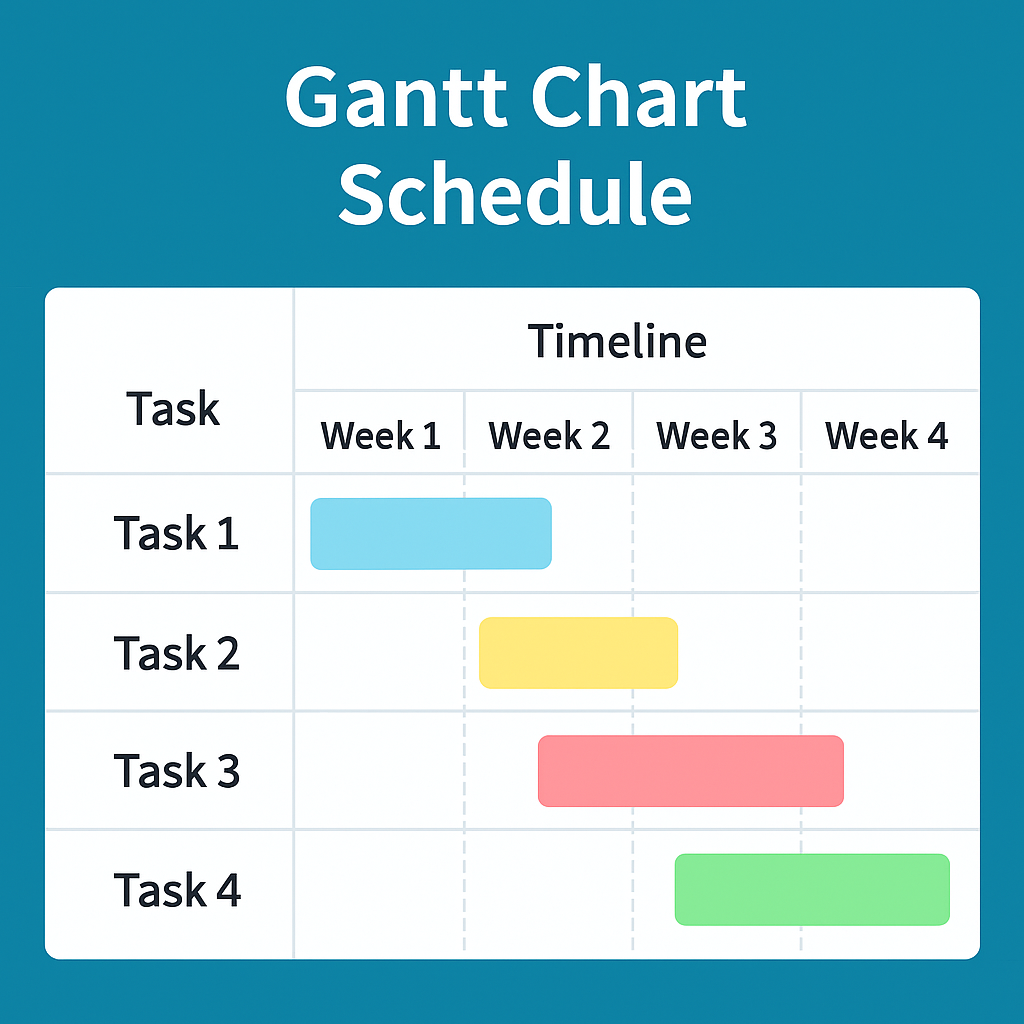
Iterative and Incremental Life Cycles
Iterative life cycles focus on learning through feedback. Each cycle produces an improved version of the solution. Incremental life cycles focus on delivering usable parts of the solution step by step. Many projects combine these approaches, delivering increments while also iterating to refine features. Together, they reduce risk and improve learning, even if the project is not fully Agile.
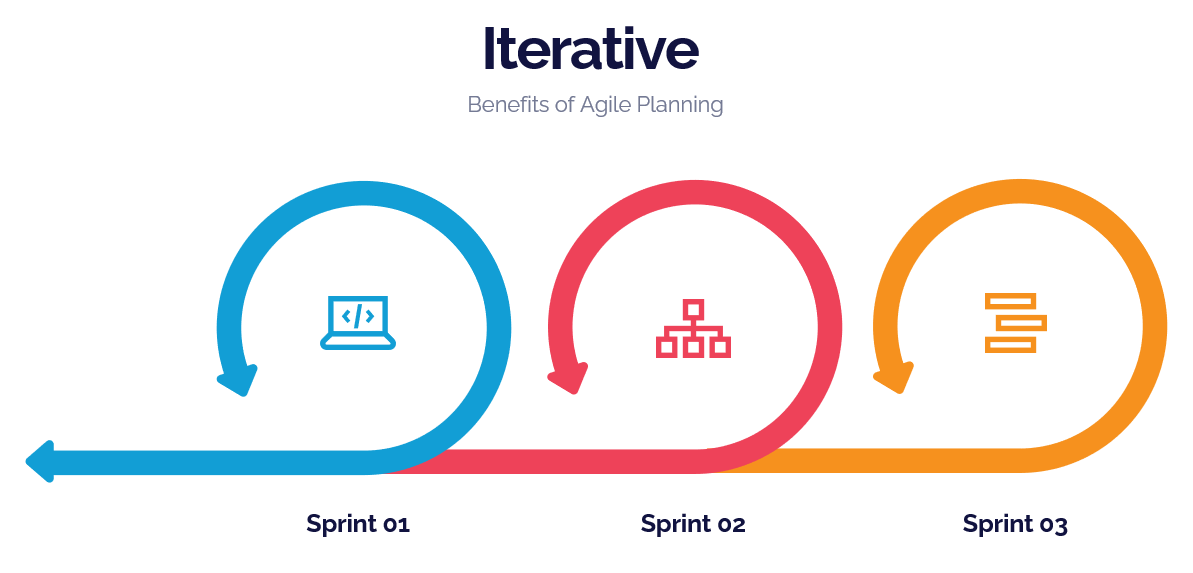
The Agile Life Cycle
The Agile life cycle combines the strengths of iteration and increment. Teams deliver small, working results frequently and adjust them based on customer feedback. Agile life cycles are ideal for projects with high uncertainty, rapidly changing requirements, or a need for early delivery of value. They provide flexibility, transparency, and adaptability, making them the preferred choice for many modern projects.
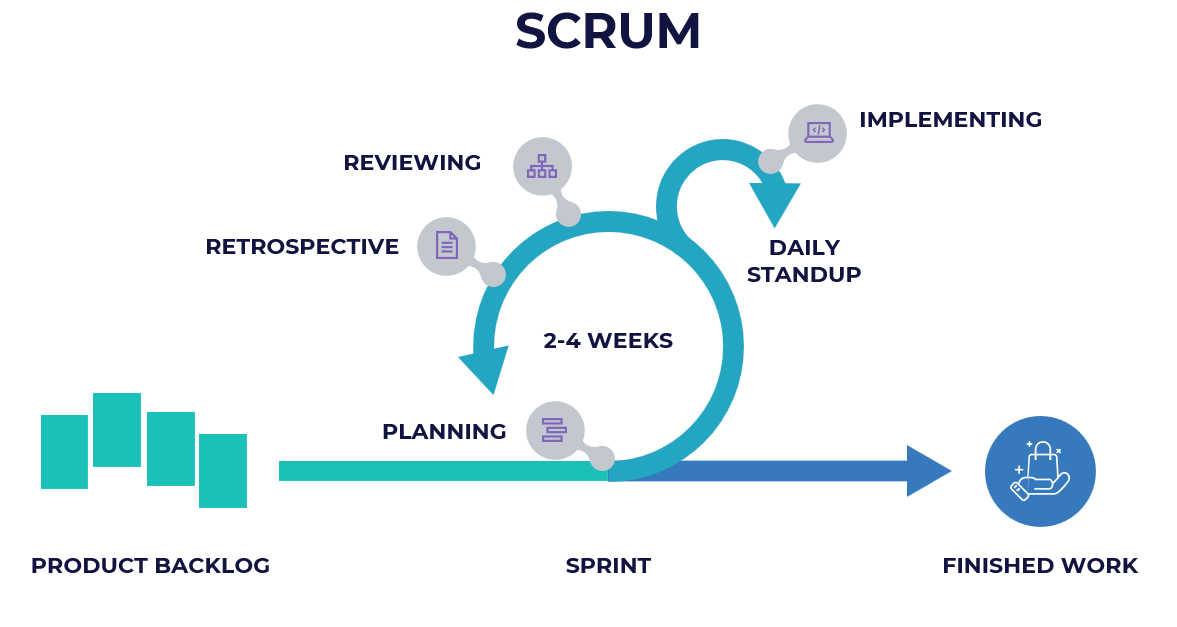
Hybrid Approaches
Not every project is purely predictive or purely Agile. Many organizations use hybrid approaches that mix elements. For example, predictive planning may be used for compliance requirements, while Agile cycles handle product development. Hybrid approaches allow organizations to adapt to complex realities, balancing stability with flexibility.
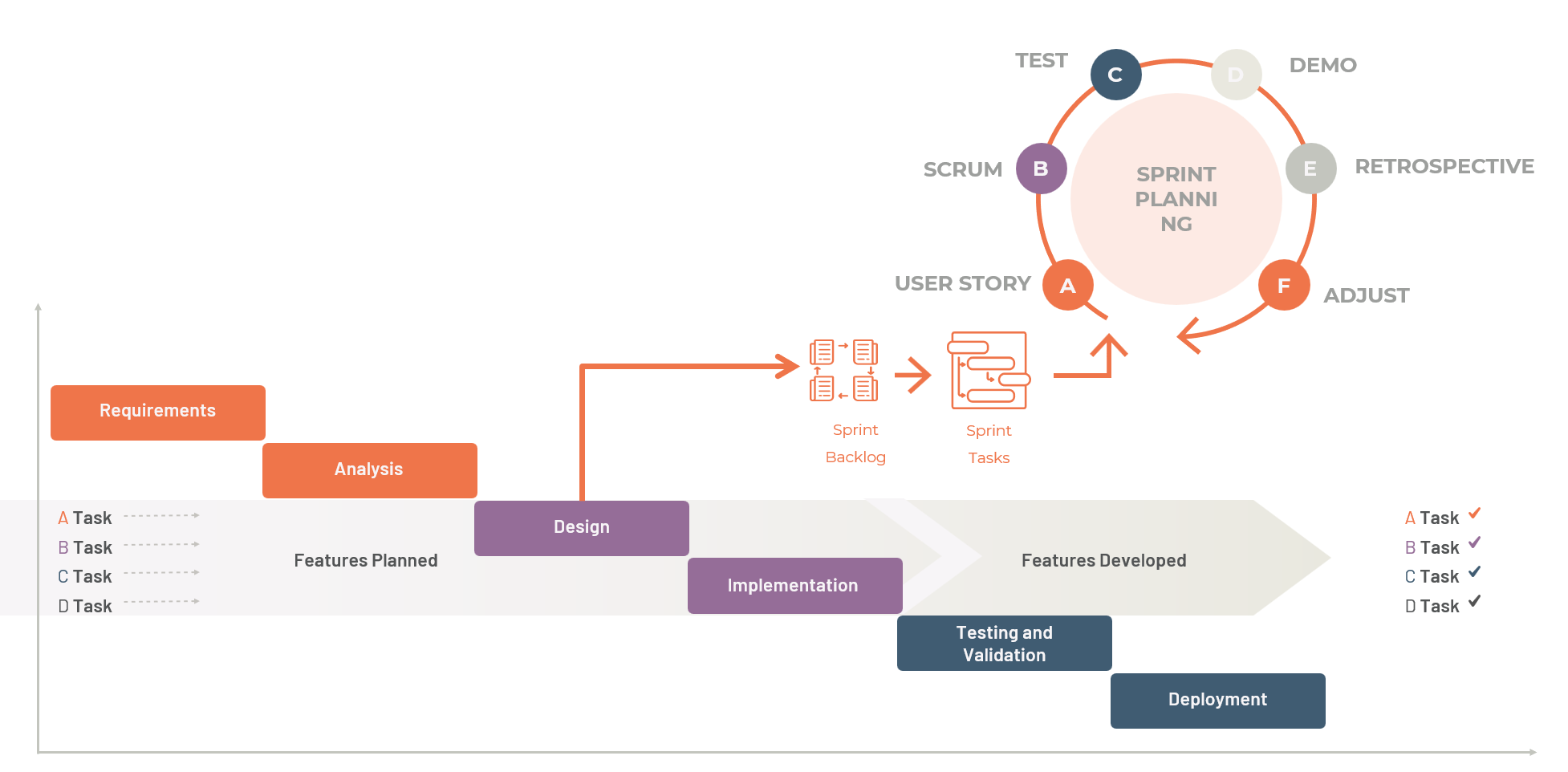
Selecting the Right Life Cycle
Life cycle selection is about matching the approach to the nature of the work. Teams should assess requirements, uncertainty, risk, and the need for feedback. Agile is not always the answer, but it is often the best fit for complex, uncertain projects. By consciously selecting the right life cycle, leaders increase the chance of delivering value effectively and efficiently.
2.9 Agile Beyond Software
Agile Expands Beyond Software
Agile began in the world of software development, but its values and principles have proven useful far beyond that domain. Today, Agile is used in industries as diverse as healthcare, education, marketing, finance, and product design. The reason is simple: many types of work involve uncertainty, complexity, and rapid change. Agile provides a way to handle these challenges by focusing on adaptability, collaboration, and frequent delivery of value.
Agile in Marketing
Marketing teams face rapidly shifting customer behavior, emerging channels, and fast-paced competition. Agile marketing applies iterative campaigns, frequent testing, and rapid feedback to improve results. For example, instead of planning a year-long campaign, teams launch smaller experiments, measure impact, and adapt strategies. This approach allows marketers to respond to trends in real time and maximize customer engagement.
Agile in Healthcare
Healthcare projects often involve complex requirements, changing regulations, and urgent timelines. Agile methods help hospitals and clinics implement new systems, improve patient services, or develop medical products more efficiently. By using short cycles and continuous feedback, healthcare teams can adapt treatments, streamline processes, and deliver safer and more effective outcomes for patients.
Agile in Education
Education is another area where Agile is making an impact. Teachers and schools are applying Agile principles to curriculum design, classroom activities, and student projects. Iterative learning cycles, feedback-driven improvements, and collaborative approaches help students and educators adapt to changing needs. Agile education fosters creativity, critical thinking, and continuous improvement in learning environments.
Agile in Product Development
Beyond software, Agile principles are used in manufacturing and product design. Companies use Agile to prototype new products, test them quickly with customers, and refine them before full-scale production. This reduces the risk of failed launches and ensures products better match customer needs. Agile product development encourages innovation while reducing time-to-market.
The Universal Appeal of Agile
The spread of Agile beyond software shows that its principles are universal. Whether designing a marketing campaign, teaching students, or creating a new product, Agile helps teams handle complexity and change. The key is not to copy software practices blindly, but to apply the mindset and principles in ways that fit the context. Agile is ultimately about delivering value, learning quickly, and working collaboratively—principles that apply to almost any field of work.
Optional Exploration
Applying agile beyond software provides a broader perspective. It shows how versatile and powerful Agile is, and it may inspire you to think about how these principles can improve work in your own industry. The lesson is clear: Agile is not limited to software, it is a mindset for solving problems in a changing world.
2.10 Project Life Cycle Using AI
Project Life Cycles in Practice
Every project follows a life cycle, and the choice of which one to use can make or break success. The predictive life cycle, or waterfall, works well when requirements are stable and steps are well known. Iterative life cycles refine results through repeated cycles and feedback. Incremental life cycles deliver usable parts of the solution step by step. Agile combines iteration and increment, providing frequent delivery and adaptability. Hybrid life cycles mix predictive and Agile, offering both stability and flexibility. These choices matter not only for academic exercises, but for the work you will do in organizations every day.
Why Choosing the Right Life Cycle Matters
In the workplace, a mismatch between the life cycle and the nature of the work can cause frustration and wasted effort. For example, rigid predictive planning may slow down an innovation project, while a loose Agile approach may fail in a regulated environment. The key is judgment: selecting a life cycle that fits both the type of project and the realities of your organization. Practicing this skill now will make you more effective later when facing real-world projects.
Understanding Organizational Context
Organizations vary in how they approach projects. Some rely almost exclusively on predictive methods because that is what their teams know best. Others are heavily invested in Agile and may resist structured planning. Neither approach is automatically right or wrong, but both can be limiting if applied without thought. Your role as a professional is to evaluate the situation, understand what the organization can realistically support, and recommend an approach that delivers the best results in that context.
Using AI as a Professional Tool
AI tools such as ChatGPT can help you practice and refine your decision-making. In your studies or at work, you will use them to analyze scenarios and test which life cycle might be most suitable. At work, you can use the same method to explore options, brainstorm trade-offs, or get a quick outside perspective. The important point is that AI provides advice, not absolute answers. You remain responsible for interpreting the recommendations and adapting them to your team’s needs and organizational culture.
A Structured Prompt for Analysis
Here is a simple prompt you can use with AI tools:
"Here is a project description: [paste narrative here]. Based on this description, which project life cycle is most suitable — predictive, iterative, incremental, Agile, or hybrid? Please explain your reasoning by:"
- Identifying key project characteristics.
- Explaining why the chosen life cycle matches those characteristics.
- Suggesting one example of how this life cycle would be applied in practice.
This structure ensures you receive thoughtful feedback you can compare with your own judgment.
Balancing AI Input and Human Judgment
AI cannot understand your organization’s unique politics, culture, or capacity for change. That is why human judgment remains essential. Use AI to speed up your thinking, uncover options, and learn from examples, but always weigh its suggestions against organizational realities. Over time, practicing this balance will make you more confident and adaptable, both in your coursework and in your professional projects.
Bringing It All Together
Practicing life cycle selection through assignments will give you a safe space to build this skill. Later, you will apply the same reasoning in real workplaces, where stakes are higher and decisions matter. By combining your own analysis with AI as a supportive tool, you will be better prepared to choose the right approach, justify your decisions, and deliver value effectively. This practice now is an investment in becoming a stronger project leader later.
Book Download Materials
To support your learning, you can download the prompt and a life cycle selection cheat sheet from the book download materials. These resources will give you quick reminders of the different life cycles and a ready-to-use AI prompt to practice your decision-making.
Agile Project Management & Scrum — With AI
Ship value sooner, cut busywork, and lead with confidence. Whether you’re new to Agile or scaling multiple teams, this course gives you a practical system to plan smarter, execute faster, and keep stakeholders aligned.
This isn’t theory—it’s a hands-on playbook for modern delivery. You’ll master Scrum roles, events, and artifacts; turn vision into a living roadmap; and use AI to refine backlogs, write clear user stories and acceptance criteria, forecast with velocity, and automate status updates and reports.
You’ll learn estimation, capacity and release planning, quality and risk management (including risk burndown), and Agile-friendly EVM—plus how to scale with Scrum of Scrums, LeSS, SAFe, and more. Downloadable templates and ready-to-use GPT prompts help you apply everything immediately.
Learn proven patterns from real projects and adopt workflows that reduce meetings, improve visibility, and boost throughput. Ready to level up your delivery and lead in the AI era? Enroll now and start building smarter sprints.
Launch your Agile career!
HK School of Management helps you master Agile and Scrum—faster. Learn practical playbooks, AI-powered prompts, and real-world workflows to plan smarter, deliver sooner, and keep stakeholders aligned. For the price of lunch, you’ll get templates, tools, and step-by-step guidance to level up your projects. Backed by our 30-day money-back guarantee—zero risk, clear path to results.
Learn More HKSM
HKSM
